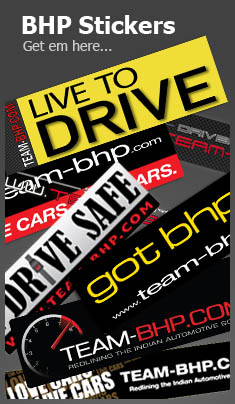News
My honest take on Citroen Basalt: Space & ride quality isn't everything
After test driving the Tata Nexon, Mahindra XUV 3XO, Kia Sonet, Skoda Kushaq, and Kylaq, I thought the Basalt would seal the deal for me.
BHPian hpaliwal recently shared this with other enthusiasts:
I was in the CSUV (~₹15L KA OTR) segment and was eager to check out the Citroën Basalt. Having heard plenty about its ride quality—and even experiencing it firsthand in BluSmart’s eC3 cabs—I was curious to see if it could be the right fit for me.
My requirements were simple: a petrol AT with decent power output (>100 bhp) and just a couple of must-have features—Android Auto and maybe cruise control. I wasn’t interested in a sunroof, digital instrument cluster, or connected car tech.
Having test-driven the Tata Nexon, XUV 3XO, Sonet, Kushaq, and Kylaq, I found that space was always a trade-off. You could either have good rear-seat space or decent boot space, but not both. The Basalt, on paper, seemed to solve this dilemma. It offered better space than anything else at its price point, paired with a powerful (and torquey!) engine and an Aisin TC AT. I went in expecting the car to seal the deal for me.
Since the KHT showroom in BLR was a bit far, I called them at 10 AM, and by 2 PM, the car was at my doorstep for a test drive.
Some quick takeaways:
- Space is definitely a plus – a balanced mix of rear-seat comfort and boot capacity.
- The cabin, however, was a letdown – it felt outdated compared to competitors. The roof lining, textures, dashboard plastics, and even the steering wheel size gave it a utilitarian feel. I couldn’t pinpoint one major flaw, but the overall experience was closer to a WagonR than an XUV 3XO. It just didn’t feel like a premium, aspirational product.
There was no wow factor. Yes, the ride quality is good, but the 3XO and Kushaq aren’t far behind. And let’s be real—I drive in the city. I can’t justify buying a car just to handle potholes. It’s not an enthusiast’s car either (maybe the C3 Turbo AT is, but a 0-star safety rating makes that a tough sell).
Maybe I’m not the target audience for the Basalt. But then, who is? Citroën’s marketing suggests it’s aimed at young, urban buyers—it’s positioned as a lifestyle statement. Yet, their messaging is vague. The Dhoni ad only highlights three things: safety, comfort, and design. Compare that to eMotorad’s campaign with Dhoni—they did a far better job of creating buzz. “Citroën = most comfortable car” isn’t a strong association in the public consciousness.
Look at the last two brands that successfully entered the Indian market: Kia and MG. Both were urban-first brands and focused heavily on the cabin experience. Kia shook the market with tech and features—Sonet and Seltos propelled it to the #6 spot in CY24, surpassing Skoda, VW, Honda, Nissan, and Renault.
MG, despite its challenges (especially the China angle), also carved out a niche. Without the Hyundai connection that Kia had, MG had to work harder—leveraging Benedict Cumberbatch to push the “British” branding. But beyond PR, their real play was a premium cabin experience.
Step inside a Kia or MG, and it feels premium—something Honda, Maruti, and Toyota don’t quite offer at this price point. Even a non-auto enthusiast would be drawn to the Astor or Sonet. These brands removed the risk of choosing a new entrant by offering true differentiation. Buyers weren’t just picking a car—they were upgrading to a segment-defining experience.
And that’s where Citroën falls short. Sure, the ride quality is good, but is it 10X better than a Sonet or XUV 3XO? Is it compelling enough to convince buyers to take a gamble on a relatively unknown brand? Right now, the answer seems to be no.
Check out BHPian comments for more insights and information.



















